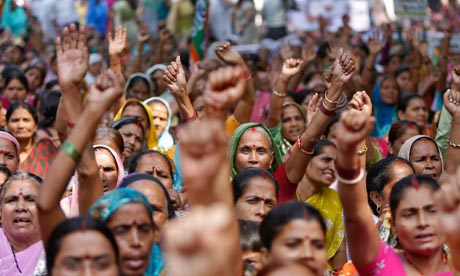NEW DELHI (Web Desk) – The socio-economic standing of women in India is the lowest among 16 Asia Pacific countries, even less than Bangladesh and Sri Lanka, says a MasterCard survey.
According to MasterCard’s latest Index of Women’s Advancement, which measures the socioeconomic standing of women across Asia Pacific, progress towards gender parity is “still sluggish”.
“Although women in Asia Pacific are increasingly more educated than their male counterparts, progress towards gender parity is still sluggish, especially in the areas of business leadership, business ownership and political participation,” the survey said.
Across the region, New Zealand had the highest overall Index score of 77, followed by Australia (76), the Philippines (72.6) and Singapore (70.5).
On the other hand, India (44.2), Bangladesh (44.6), Sri Lanka (46.2) and Bangladesh had scores below 50, indicating that much more needs to be done to achieve gender parity.
A score under 100 indicates gender inequality in favour of males while a score above 100 indicates inequality in favour of females. A score of 100 indicates equality between the sexes.
The survey further said that five markets, namely New Zealand, the Philippines, Vietnam, Sri Lanka and Thailand had a score of 100.0, indicating that women are on par or better represented in secondary and tertiary institutions than their male counterparts.
Comparatively, women in India (85.7), South Korea (85.9) and Bangladesh (87.6) have fewer opportunities than men when it comes to secondary and tertiary education.
Moreover, women in India (99.0), Bangladesh (102.4) and China (99.6) have made the biggest strides towards attaining gender parity in “Regular Employment” over the past nine years, rising 39.6, 21.1 and 16.0 index points, respectively.
Commenting on the survey findings, MasterCard group head, Communications Asia Pacific Georgette Tan said “in a highly competitive market, companies are beginning to understand why integrating talented women into leadership structures is imperative for sustainable economic growth and innovation in both developed and developing markets.”














